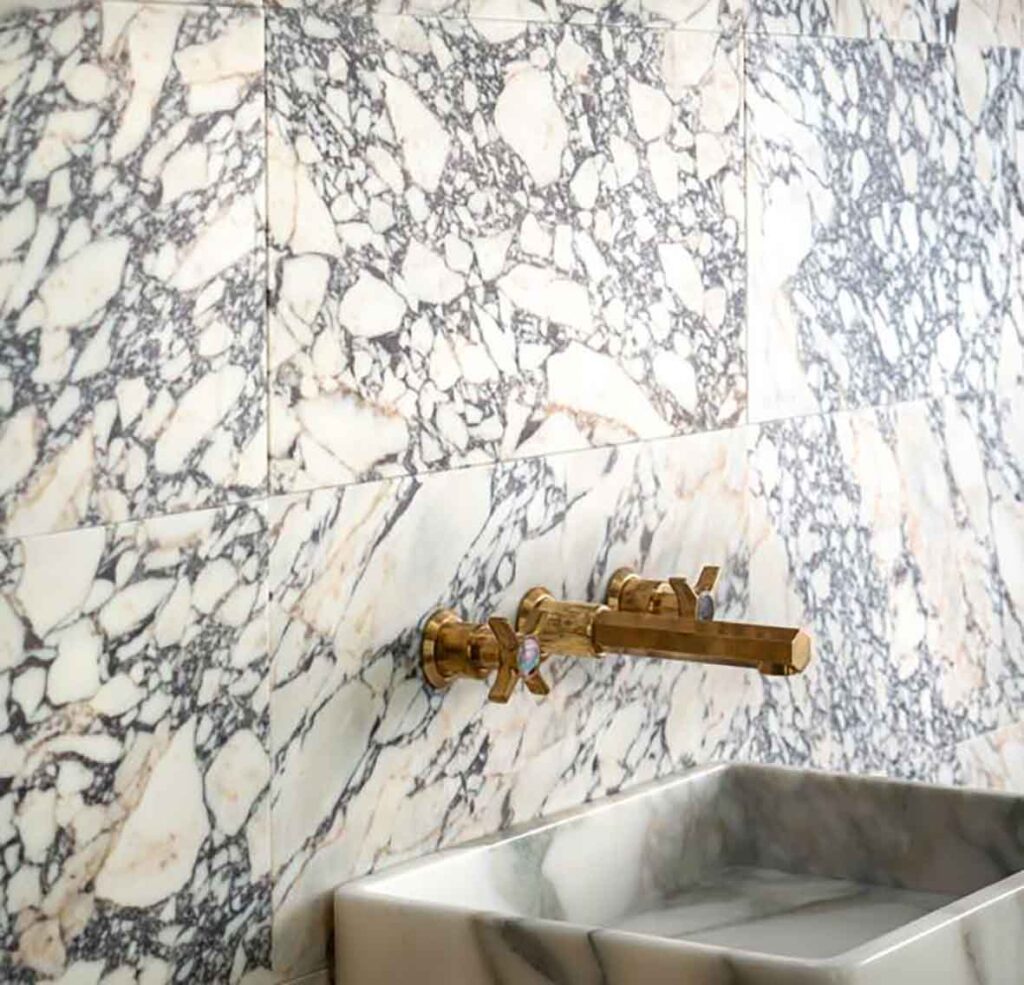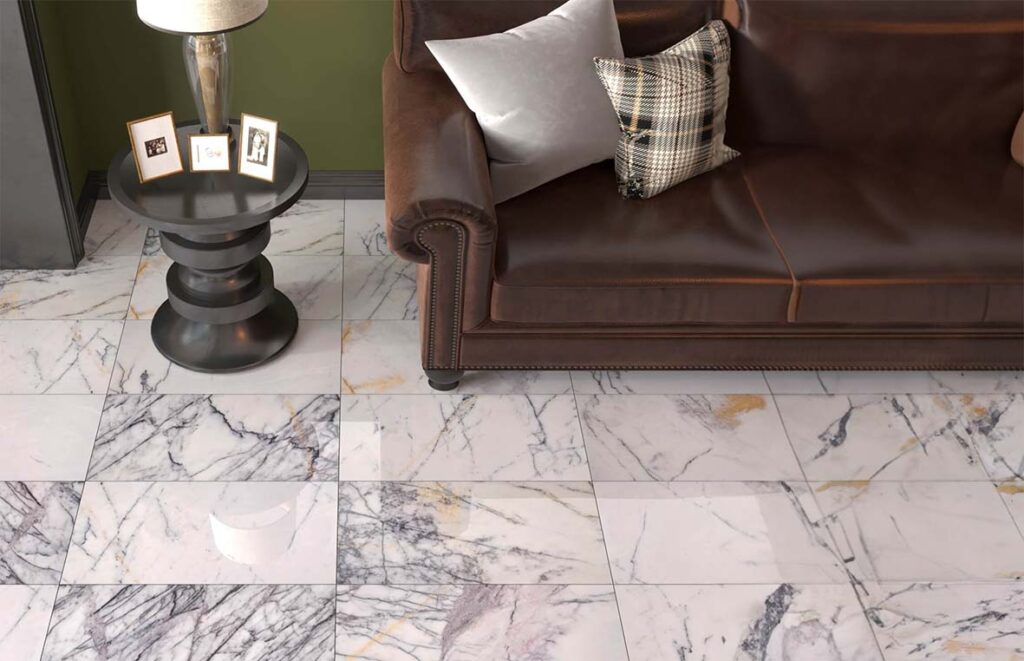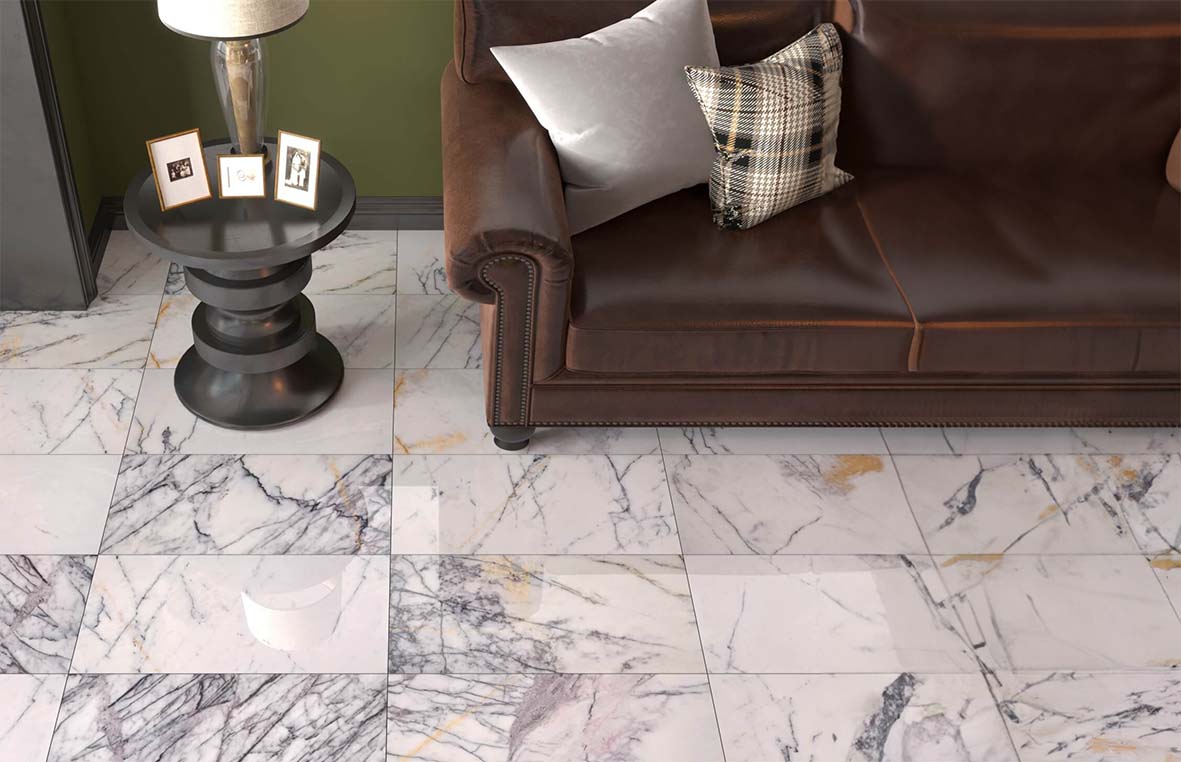Imagine walking into a room where the floor gleams with the elegance of marble tiles. Each piece fits perfectly, creating a seamless, luxurious look. Whether you’re a seasoned professional or a DIY enthusiast, installing marble tile can transform any space.
The key to a flawless finish lies in the details. Have you ever wondered what it takes to master this craft? We will give you expert tips and techniques for a beautiful floor in this marble tile installation guide.
Read on to learn how to install marble tiles like a pro and avoid common mistakes.


Preparing Your Surface for Marble Tile Installation
Before you even think about laying your first tile, you need to make sure your surface is ready. A clean, level, and dry substrate is crucial for a flawless marble tile installation.
Skipping this step can lead to big problems down the road. Imagine spending hours on your project only to have tiles pop up or crack because the surface wasn’t prepared properly. Let’s make sure that doesn’t happen.
First, ensure the surface is clean. Dust, dirt, and any old adhesive can cause uneven spots. Use a vacuum and a damp cloth to wipe everything down.
Next, check that the substrate is level. Use a straight edge or level to find any high or low spots. If you find any, use a leveling compound to smooth them out.
Moisture can also cause issues. Make sure the surface is completely dry before you start.
Any leftover moisture can weaken the adhesive, which will make your tiles less secure. By taking the time to prepare your surface properly, you’ll set yourself up for a successful installation.
Choosing the Right Adhesive for Marble Tiles
Selecting the right adhesive is essential for a successful marble tile installation. With so many options available, it can be overwhelming to choose the best one.
There are several types of adhesives commonly used for tile installation. Mastic adhesive is often used for ceramic tiles, but it’s not suitable for marble.
Epoxy-based adhesives are strong and durable, but they can be tricky to work with, especially for beginners. The most popular choice for marble tiles is thinset mortar. Thinset comes in different colors, but for marble tiles, white thinset mortar is the way to go.
Why white thinset mortar? Marble is a porous, light-colored stone that can be easily stained. Using a darker adhesive can lead to discoloration, which would ruin the elegant look of your marble tiles.
White thinset mortar prevents staining and blends seamlessly with the marble, ensuring your installation looks pristine.
Essential Tools for a Successful Marble Tile Installation
First on the list are notched trowels. These tools are crucial for spreading adhesive evenly on the substrate. The notches help create ridges in the adhesive, ensuring better contact with the tile.
For marble tiles, a 1/4-inch notched trowel is typically recommended. To use it effectively, spread the adhesive with the flat side of the trowel first, then use the notched side to create even ridges.
Next, you’ll need tile spacers. These small, often plastic, pieces are placed between tiles to ensure consistent spacing and alignment.
Marble tiles need precise spacing to maintain their elegant look. Common spacer sizes for marble tiles are 1/16 inch to 1/8 inch. Insert spacers as you lay each tile to keep lines straight and even. Remove them before the adhesive fully sets to make grouting easier.
A wet saw is another essential tool for cutting marble tiles accurately. Unlike standard tile cutters, wet saws use water to cool the blade and reduce dust, preventing the marble from cracking or chipping.
When using a wet saw, mark your cuts clearly and take your time to ensure precision. Always wear safety goggles and follow the manufacturer’s instructions to avoid accidents.

Planning Your Layout for Optimal Results
A well-thought-out layout is key to a successful marble tile installation. Taking the time to plan your layout can prevent many common issues and ensure your tiles look stunning once installed.
Dry-laying your tiles before you start with adhesive is a crucial step. This means arranging the tiles on the floor without any adhesive to see how they fit together.
Dry-laying helps you visualize the final look and allows you to make adjustments before it’s too late. It also gives you a chance to plan for any pattern or design you want to create.
When planning your layout, start from the center of the room and work your way out. You achieve a balanced look and avoid small, awkward cuts along the edges. Measure the length and width of the room to find the center point.
From there, draw intersecting chalk lines to guide your tile placement.
Pay attention to alignment as you lay out the tiles. Use a tape measure to check distances and ensure tiles are evenly spaced.
Make sure to place tile spacers between each tile to maintain consistent gaps, which will help you keep straight lines and even grout joints throughout the installation.
Using Chalk Lines and Laser Levels for Precision
Achieving straight lines and perfect alignment is essential for a flawless marble tile installation. Chalk lines and laser levels are invaluable tools for this task, ensuring your tiles are perfectly aligned and evenly spaced.
Chalk lines and laser levels offer precise guidance and help you avoid crooked tiles and uneven grout lines. They provide a clear, straight guide across your workspace, while laser levels project straight lines of light.
Mark the Center
Begin by finding the center of your room. Measure the length and width, then mark the center point.
The center will be your starting point for laying tiles.
Draw Reference Lines With Chalk
From the center point, use a chalk line to snap a straight line across the room in both directions, forming a cross. These reference lines will guide your tile placement so that your tiles are centered and aligned.
Set Up Your Laser Level
Place your laser level in the center of the room, aligning it with the chalk lines. Turn on the laser to project lines that intersect at the center point.
Adjust the laser level until the projected lines match your chalk lines perfectly.
Align the Tiles
Begin laying your tiles along the chalk lines, using the laser lines to double-check your alignment. The laser level will help you maintain straight lines and even spacing as you work across the room.
Flawless Marble Tile Tips
Marble is a porous material, making it susceptible to stains and etching from acidic substances. Sealing your marble tiles is crucial to maintaining their beauty and durability.
Choose a high-quality, penetrating sealer designed for natural stone. Apply the sealer with a soft cloth or sponge, ensuring an even coat over the entire surface. Let it soak in for the recommended time, usually 15-30 minutes, then wipe off any excess.
For best results, seal your tiles before and after grouting.
Grout plays a significant role in the overall appearance of your marble tile installation. Choose a grout that complements the color of your marble and is suitable for use with natural stone.
Epoxy grout is an excellent choice for its stain resistance and durability, but it’s more challenging to work with than traditional cement-based grout.
Once the grout is applied and has cured, sealing it is essential to prevent discoloration and stains. Use a grout sealer designed for natural stone, and apply it carefully along the grout lines with a small brush or applicator bottle.
Sealing the grout ensures that it remains clean and maintains its color over time.

Troubleshooting Common Marble Tile Installation Issues
Even with careful planning and execution, you might encounter some problems during your marble tile installation.
Tile lippage occurs when adjacent tiles are not level with each other, creating an uneven surface. To prevent lippage, ensure your substrate is perfectly level before installation. Use a leveling system with spacers to keep tiles aligned as adhesive sets.
Marble can stain if exposed to certain substances. If you notice stains, clean them immediately with a pH-neutral cleaner. Regularly sealing your marble tiles will also help prevent stains from setting in.
Cracks can result from improper handling or an uneven substrate. To avoid cracking, handle tiles with care and ensure the surface is level and stable.
If a tile does crack, carefully remove it and replace it with a new one, ensuring it is properly aligned and adhered to.
Tiles can become loose if the adhesive does not bond properly. Make sure you use the right adhesive for marble tiles and apply it evenly.
Press each tile firmly into place, using a rubber mallet to gently tap it down and ensure a strong bond.
Mastering the Art of Installing Marble Tile
Installing marble tile can transform any space into a luxurious masterpiece. By following our expert tips and techniques, you’ll ensure a flawless finish that lasts. From preparing the substrate to selecting the right adhesive and tools, every step matters.
Ready to take your marble tile installation to the next level? At RUBI, we evolve daily with professionals worldwide, providing the tools needed for the best results. Our commitment to sustainability and equal opportunities makes us a trusted partner in your projects.
Take a look at our tile-installing products today!



Post a comment